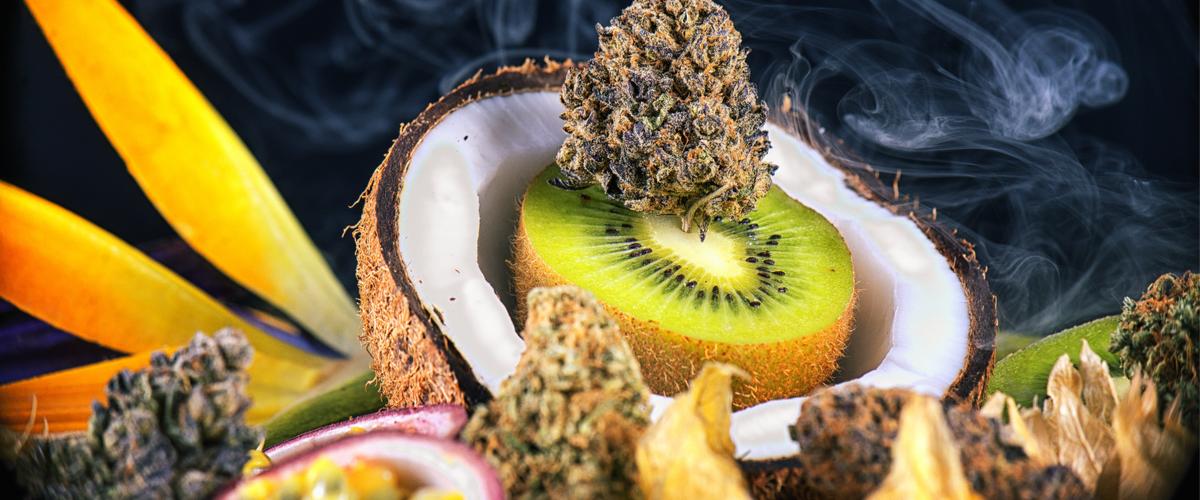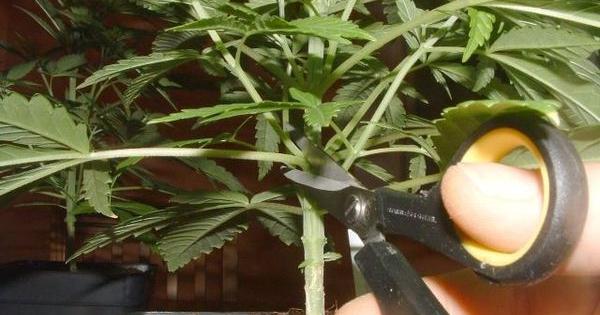- Terpenes and its direct interaction with cannabinoids have become an increasingly common topic of conversation among cannabists across the world.
- Directly influencing the flavour, aroma and, to some extent, the effect of cannabis flowers, terpenes are volatile compounds which, together with cannabinoids, shape the organoleptic properties of cannabis. These vary from strain to strain and may be used for various therapeutic purposes.
- Here is how you can increase terpene production during cannabis growing so that you can start making the most of all their benefits.

Choose potentially terpene-rich genetics
Every cannabis grower knows that no two strains are alike, and this is true also for organoleptic profiles – while some strains have rich, complex flavours and aromas that are easy to enhance, others come with fragrances unique only to them.
Choosing a suitable strain is thus essential, as it will largely affect the final result – be it raw flower or extracts.
Some good options in our catalogue include Moby Dick, Critical+, Critical Cheese, Kush'N'Cheese, Blue Kush, Orange Juice, Strawberry Amnesia, Sweet Deep Grapefruit and Purple Afghan Kush. All these strains have a rich, complex terpene profile that is pleasantly intense and unique, and have the potential to produce premium terpene-rich harvests.
Grow your plants in soil
Experienced growers are well aware that the flowers of plants grown in soil produce way more complex flavours and aromas than that of plants grown in other media. In fact, nothing compares to the organoleptic richness obtained through a quality soil mix that is rich in organic and mineral components.
It's a lot like growing wine: A same strain grown on different plots – in a different country, in specific soil, with a specific climate and other specific environmental factors – can produce two very different results – inter alia, in terms of overall fruit appearance, aroma, flavour and alcohol content of the wine produced. This phenomenon is associated with the nutrient profiles found in the soil or medium employed.
Organic fertilisation

It goes without saying that organic nutrients are a must if you are to increase terpene production. You can use a hand-made soil mix like super soil, which contains all the nutrients and minerals necessary to keep plants well fed at all times.
Also, it is worth taking the time to inform yourself about incompatibilities between the different components in the soil mix so that you can use each of them in the right proportion. This will allow you to obtain a well-balanced, nutrient-dense soil that will enhance the flavour and aroma of your plants.
Light quantity and quality
Light is another aspect that greatly influences the quality of cannabis. It's not for no reason that cannabis grown outdoors is so flavourful, and a big part of that reason is the composition of natural sunlight's complex light spectrum.
As for indoor growing, LED lamps, the more innovative LEC/CMH lamps, or even a combined spectrum obtained by simultaneously using an MH and an HPS sodium lamp, have proven to work best during flowering, significantly enhancing the flavour and aroma of the buds – sometimes even the intensity of the effect.
The more varied the resources, the more complex and intense the final product. Thus the importance of providing lights that offer a full range spectrum that is adapted to each growing phase.
Growing and pruning techniques
Using one or several pruning techniques can contribute greatly to increasing the terpene levels of your plants. This is explained by the fact that when you prune lower branches, which normally get very little light, all the components in the plant including terpenes start to accumulate in the flowers at the top.
You can get the same effect using the Screen of Green technique, which increases yields, resin and terpenes by ensuring a more even production.
Other useful techniques include See of Green, Low Stress Training and gradually removing leaves. Remember, however, that not all strains respond the same to these techniques.
For this reason, it's always good to know how a particular strain will behave before actually growing it. One good tip is to test the technique on one branch before applying it to the whole plant. If correctly used, you'll be surprised to see how terpene-rich some strains can get.
Flush your plants
You should stop feeding your plants at least 15-20 days before harvesting and give them just water – with a pH of 6.0 – in order to eliminate the excess nutrients that build up in their tissues. This will cause the leaves to yellow, a sign that excess nutrients are being washed out successfully.
If you skip this step, you may fail to bring out the organoleptic properties of your buds, which could even harm your health when you smoke them. This is because nutrient-rich plant tissue releases a carcinogenic compound known as nitrosamine during combustion. So skipping the flushing step is completely out of the question.
Choose the right harvest time

Knowing when to harvest is another key step in the process of increasing terpenes. Harvest time should coincide with the plant's ideal ripeness, when the flowers, including the calyxes and the pistils, are fully formed.
Another sign that the plants have reached ripeness is when 30% of the trichomes have gone amber, an indicator that they're maturing as they should. Other key indicators include fresh-looking flowers and an aroma that is intense.
As you gain experience as a grower, you will find it easier to know when the right time to harvest has come. Be aware, however, that some strains behave slightly differently in this department and need to be harvested at a specific time, otherwise their qualities may not shine through as clearly as they should.
Hand trimming
Cannabis buds are fragile, this is why you should always try to trim them by hand with the greatest possible care. If you follow the above steps to the letter but are not gentle enough during trimming, all your hard work could be in vain.
So make sure your buds are not exposed to shocks or falls while you handle them, as this will prevent you from destroying the terpenes – remember they're volatile -and even the trichomes. Needless to say, machine trimmers should be avoided like the plague.
Proper curing

Curing is the last stage of the process, the moment after which growers can finally taste the fruits of their labour. This final stage requires a temperature of 17-20 ºC and a humidity range of 45-55%. Equally important is to keep the containers with the buds in a storing place that is protected from light.
The above measures will help you create the ideal conditions for slow gas exchange during curing, which contributes to richer, more complex buds.
Curing should last from 3 to 5 months, during which you should open the containers at frequent intervals for the flowers to breathe. These, however, will vary depending on the conditions in the curing room and on how the flavour and aroma of your flowers evolve.




Comments from our readers
Did you like this post?
Your opinion about our seeds is very important to us and can help other users a lot (your email address won't be made public).